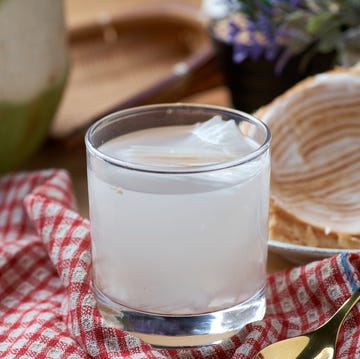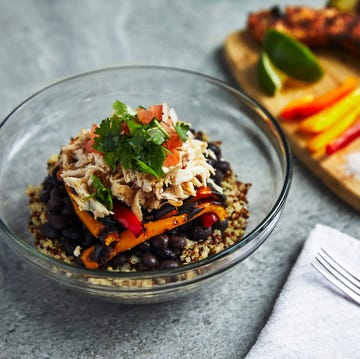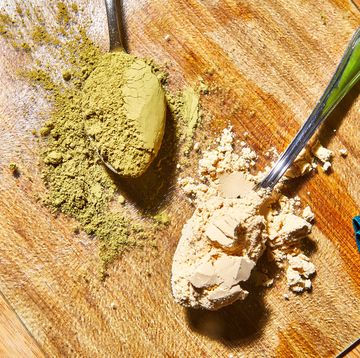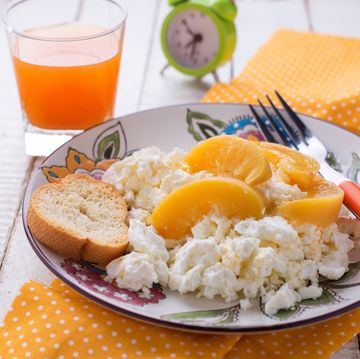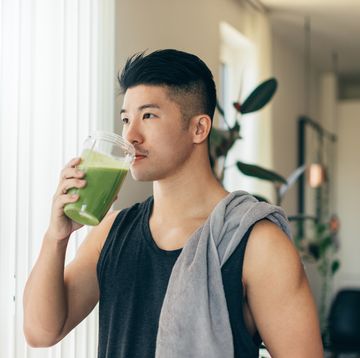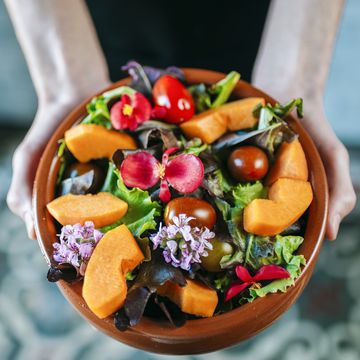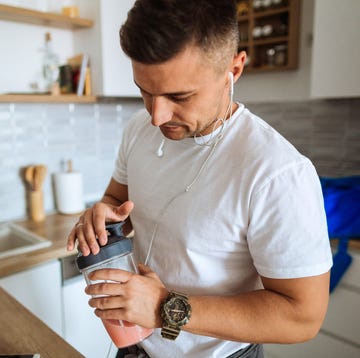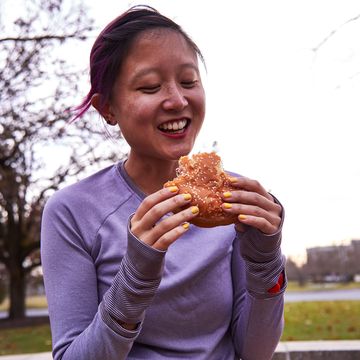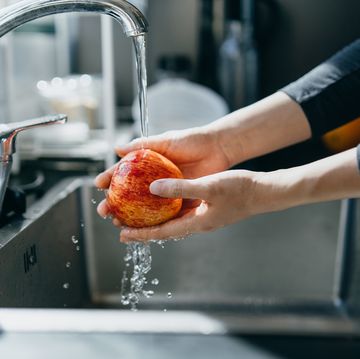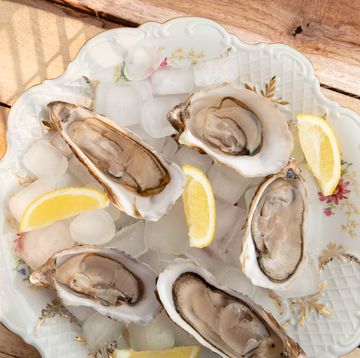The mysteries of muscle cramps abound. In addition to everyday runners, most experts still ask what causes them and how we can relieve the pain. And while we still have some work to do to find out the exact answers to those questions, we do have some useful information to help you sidestep spasms.
Many runners rely on stretching to prevent cramps and grab electrolytes and salty drinks to cure them if they happen. One of those drinks: pickle juice. But should you drink pickle juice for muscle cramps?
Here, we break down the science and expert-backed info on what you need to know about pickle juice to help relieve muscle cramps, plus what else you can try for ache relief.
More From Runner's World

What are muscle cramps?
Muscle cramps are, officially, “continuous, involuntary, painful, and localized contraction of an entire muscle group, individual single muscle, or select muscle fibers,” according to the National Library of Medicine.
A 2021 review of the research around the causes and cures of exercise-associated muscle cramps published in The Journal of Athletic Training, found that the three main factors that contribute to this painful experience include dehydration, muscle fatigue, and not getting a good night’s sleep. However, researchers still don’t know when and how those situations will lead to a muscle cramp in some athletes and not others.
Can pickle juice relieve muscle cramps?
The lead researcher of that study on causes of cramping, Kevin Miller, Ph.D., professor of health and human performance at Texas State University in San Marcos, Texas tells Runner’s World that his team found that drinking 1 milliliter of pickle juice per kilogram bodyweight relieves cramps more than drinking water or doing nothing in a study published in 2010.
“The investigators hypothesized that the vinegar triggered an oropharyngeal reflex that inhibited cramping,” Miller says. This means that the sour vinegar flavor may immediately distract you from the cramp and actually “inhibit the firing of alpha motor neurons of the cramping muscle.” In other words, because you’re paying attention to the taste of the pickle juice, your brain ignores the cramp.
How do they know it’s not the actual pickle juice, but rather its flavor that stops the cramp? Because the athletes stopped feeling the cramp within 35 seconds, and pickle juice can’t travel from your throat and through your digestive system to a muscle that quickly. So the researchers suggest your brain just stops thinking about the cramp while you’re drinking the juice.
While that research review suggests pickle juice may work for cramping, the mechanisms aren’t quite understood and we need more information to say you should stash some of the green juice in your pocket while you run. “More research is needed on pickle juice because we still need to figure out how it works, its active ingredient, optimal dosage, frequency, and who should and shouldn’t be using it,” Miller says.
Also, other research says the opposite about pickle juice for muscle cramps. A study published in 2021 in the journal Applied Sciences, found no difference in cramp duration or perceived discomfort in those that took pickle juice versus water—at least in the 11 adults involved in the study.
So should you be drinking pickle juice?
Despite the lack of strong research, and because everyone loves a potential magic bullet, more pickle juice products have been marketed toward athletes, including some packaged in convenient, single-serving shots.
If you decide you want to give the drink a try, Marie Spano, RD, a sports nutrition coach in Atlanta, Georgia tells Runner’s World that reading nutrition labels before trying pickle juice (or any other product) is important, because they are frequently high in sodium and may not be healthy for those with high blood pressure or who are sensitive to sodium and need to limit their intake.
Fortunately, many of the products marketed to runners and other athletes are well within general sodium recommendations. According to the Dietary Guidelines for Americans adults should limit sodium intake to less than 2,300 milligrams per day which is equal to about 1 teaspoon of table salt. A shot of pickle juice has 470 milligrams while a Gatorade Endurance gel has significantly less—90 milligrams.
While sodium is the number-one electrolyte lost in sweat and one we need to replenish, Spano says, it’s not the only electrolyte to pay attention to as you run. Electrolytes are essential minerals that regulate muscle contractions, balance your pH levels, and keep your nervous system in check, among other things. That’s why Spano recommends experimenting with “electrolyte products with higher sodium contents including sports drinks, electrolyte powders, and gels and gummies,” she says.
Figuring out which product works for you may take some time. But if you’re not concerned about going overboard on sodium, pickle juice may be one that you try during a run to see how it helps with your energy and keeping cramping at bay. Just know there’s not much sound science to back up its benefits.
Also, whenever you want to incorporate a new supplement or product into your training, whether it’s to increase performance or prevent pain, you should speak with your doctor. “Before trying a cramp prevention product, people should discuss the product and its ingredients and its proposed mechanism of action with their physicians,” says Miller.
What else can you do to address muscle cramps?
According to the American Medical Society for Sports Medicine, as well as Miller’s review of the literature, exercise-induced muscle cramps appear to be correlated with heat, fatigue, and dehydration. The exact combination of these three issues, however, has not been untangled.
Based on the research, both Miller and Spano recommend staying hydrated, getting quality sleep, and avoiding muscle fatigue to avoid cramping as you run.
More recently, a study published in The Journal of Strength and Conditioning Research, added a new potential cause of cramping: lack of strength training. While fewer than 100 runners took part in the study, 24 percent experienced cramping during their runs.
The researchers found that the sodium and potassium levels were similar in those who did and did not get cramps. However, the runners who suffered from cramps experienced more muscle damage during the race. The researchers said this was likely due to a lack of cross-training and those who strength train regularly may have a reduced risk of cramping.
In addition to adding weightlifting to your routine, if you are a runner prone to muscle cramps, Miller also suggests taking notes on the circumstances around your cramping. This will help uncover what may be causing the contraction. He advises that athletes keep a “cramp journal” and look for patterns in their nutrition, exercise, sleep, hydration, and other habits whenever they experience cramping. “Once a pattern appears,” Miller says, “target those risk factors with interventions to try and prevent cramping.”

